Ancestry’s ThruLines™
Ancestry is replacing their DNA Circles with a new feature: ThruLines. What is it? How does it work? Will it help you break through your brick walls? Let’s take a look.
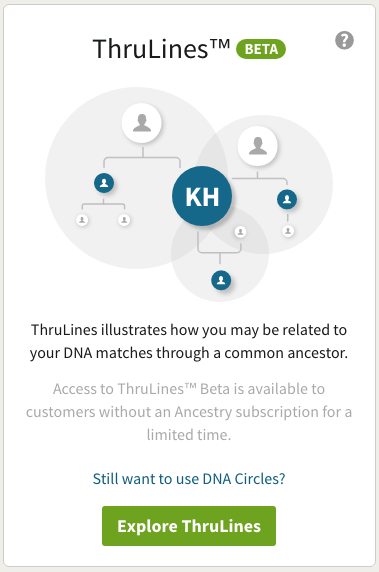
Ancestry’s ThruLines will show you how your DNA matches that of another person through an ancestor you both share. The tool uses Ancestry’s family trees—public and private—to build a path—or ThruLine—from your match to a common ancestor. Private individuals are represented but not named in the path.
How is this different from DNA Circles? The main differences are 1) it uses both public and private trees (as long as they’re searchable) and 2) it doesn’t just use your tree and your match’s tree, it uses all of Ancestry’s searchable trees. So, it will work for any of your matches that have ancestors in their trees who can be found in another tree.
Does this mean that your shared DNA is from this common ancestor? Maybe.
What Ancestry is doing is creating a quick and dirty tree for your match. It’s just taking the human out of the process. The ThruLine that it creates is only as good as the information in family trees available at Ancestry. And we’ve all seen how reliable some of those trees are.
How To Use It
Access to ThruLines can be found in three locations. It replaces the DNA Circles box on the DNA Summary page (or you can choose to continue to use Circles for now). Clicking on “Common Ancestor” for a match on the match list page (see below). And it is also found on the new match detail page for applicable matches.
ThruLines Page
Clicking on the “Explore ThruLines” button takes me to a page that looks a lot like the DNA Circles page.

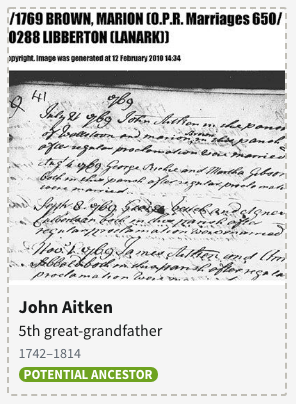
This page shows all my direct ancestors as entered in my linked family tree (or should) and a few speculative ones, as well. The speculative ancestors are differentiated with a dashed outline and tagged “potential ancestor.”
I can filter these ancestors to show: all the matches, potential ancestors, or ancestors from my linked tree.
Match List

If your match has a tree that is searchable and tree members can be found in other Ancestry tree(s), then the “Common ancestor” tag with leaf will be found in their listing. This indicates a possible connection has been found.
Match Detail
If I click on “Common ancestor” (yes, it’s clickable), then I’m taken to the match detail page which shows me our common ancestor(s). In this case two ancestors are shown—father and son.
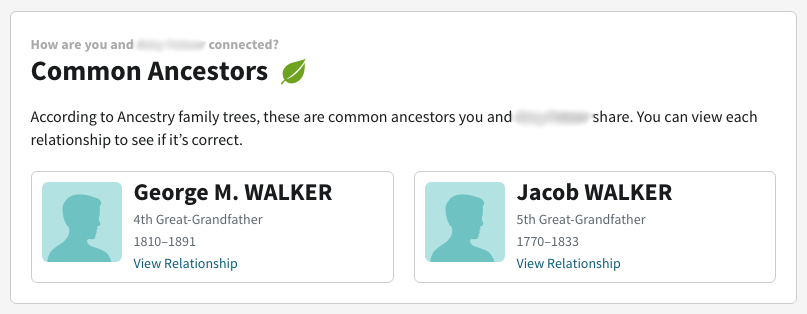
Clicking on “View Relationship” for either man will take me to a page that shows me how my match and I are related to that individual.
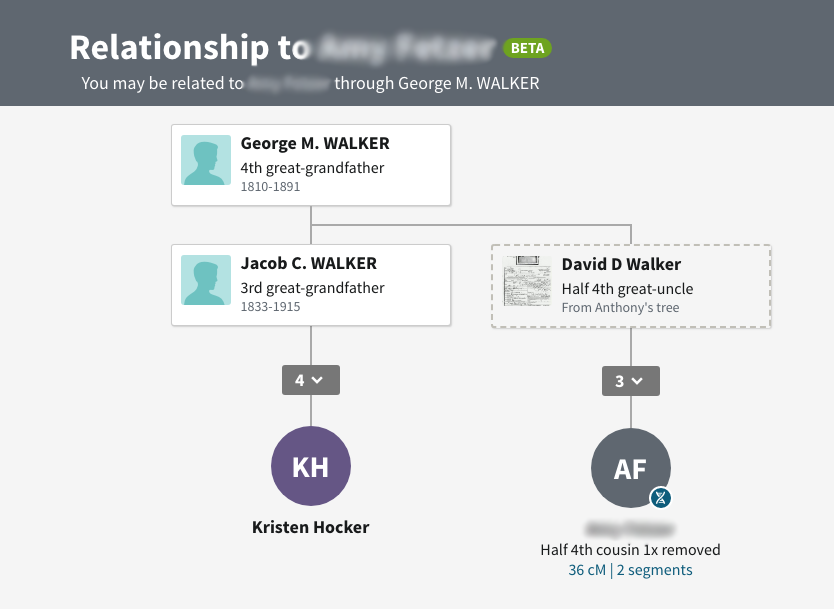
Accessing ThruLines through the match lists will only show you a possible ancestor for a specific match. Accessing it from the summary page and selecting a specific ancestor will show you all the cousins identified as potentially descended from your ancestor.
Is It Accurate?
I’ve been using this tool, reviewing the individuals in the trees used to try to determine whether or not the path—and common ancestor—is accurate. The results have been mostly “yes, it appears accurate,” but not completely so. And in a couple of cases it isn’t quite working as expected.
I have entered both Jacob Schneider and Catharina Nuss—ancestors I’ve identified using both DNA research and traditional genealogy—and Catharina’s ancestors in my linked family tree. Only Jacob appears on my ThruLines page. Instead of Catharine, a speculative mother for Henry Schneider shows up—Susanna Yeakel (Wagner) Schneider.
Here’s Jacob’s ThruLine expanded to actually show descendants. It shows four DNA matches to me. I’ve identified more, but some of them share DNA with my mother and not me.
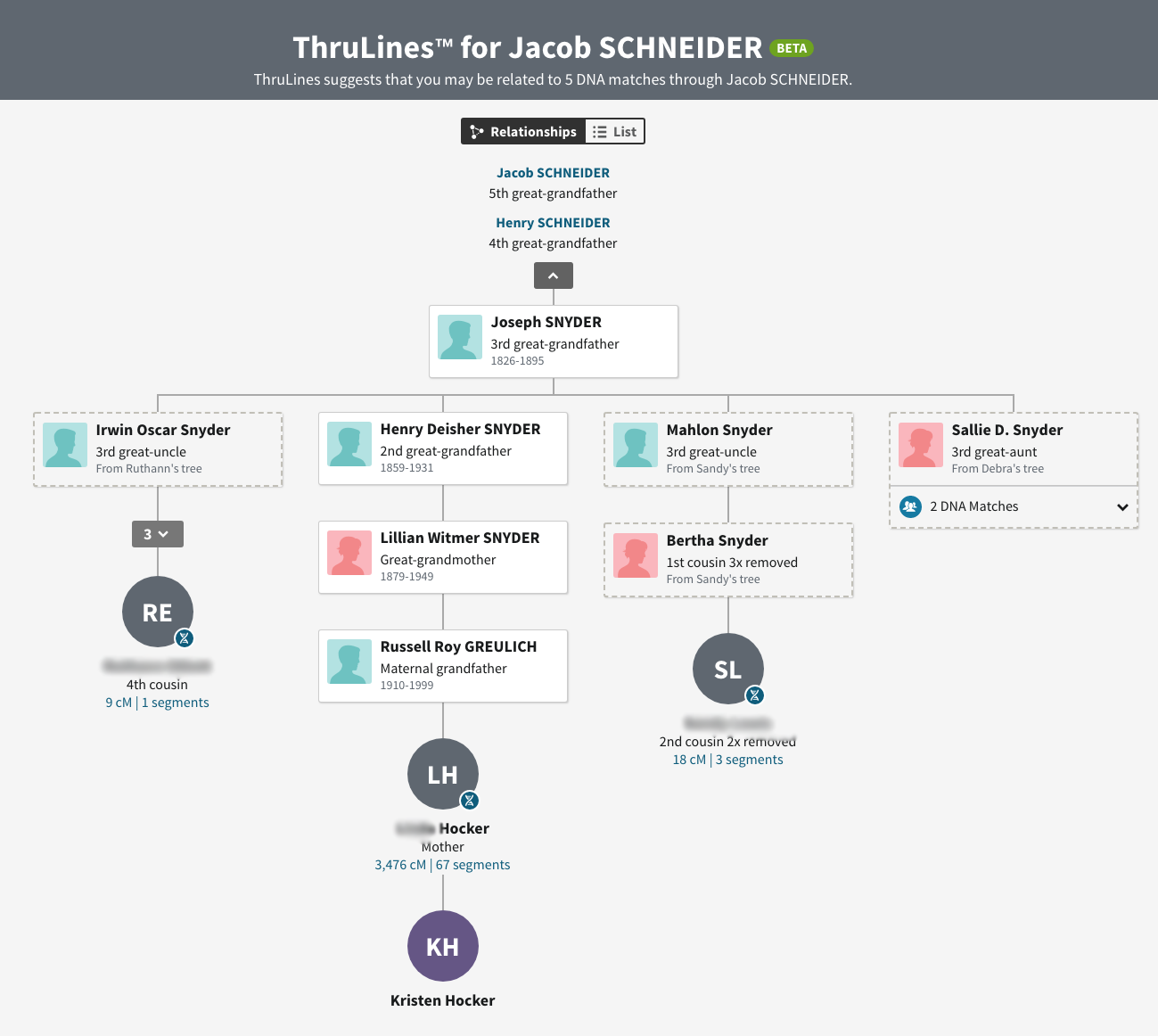
Here’s the ThruLine for Susanna Yeakel (Wagner) Schneider.
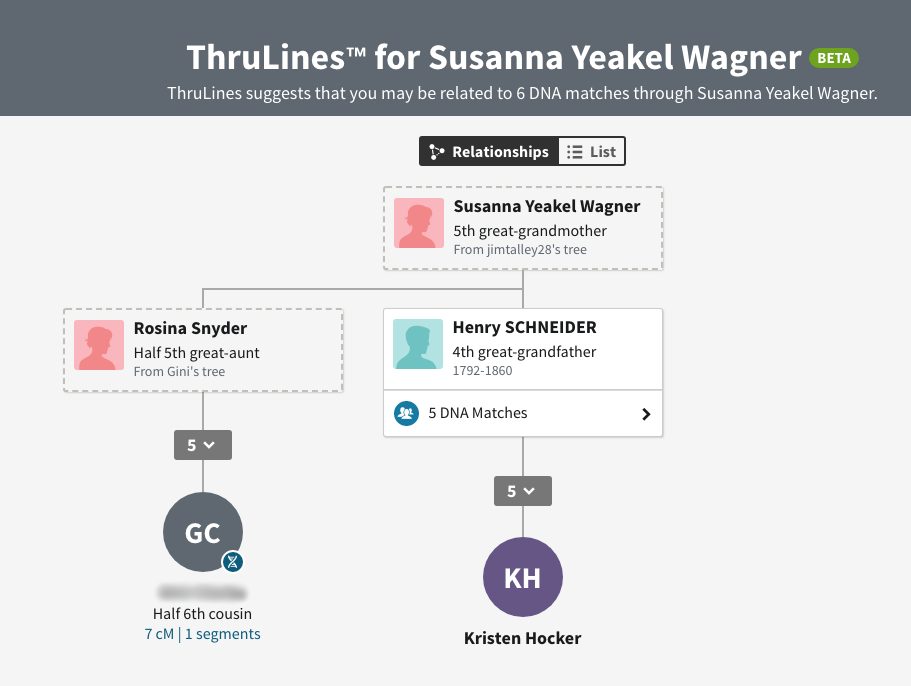
It’s suggesting that descendants of Jacob Schneider also match a descendant of Susanna. If I look at the tree associated with Susanna Yeakel (Wagner) Schneider, there’s no son named Henry Schneider. Susanna Wiegner married George Schneider on 25 April 1784.
Furthermore, I can identify the family as belonging to the Schwenkfelders. Susanna’s mother is my 6G Grandaunt through the Yeakel family—I descend through her brothers Johannes Heinrich and Jeremias—and her father is my 1st cousin 8x removed through his mother, Susanna Seipt. Despite all the Schneiders in my ancestry, I’m not (to my knowledge) related to George at all.
Additionally, I’ve yet to see ThruLine suggest multiple common ancestors for a match like the current shared ancestors does. And quite a few of my matches share multiple lines of descent with me. If your ancestors stayed in one place like most of mine, sooner or later someone married a cousin.
And remember that this tool will not tell for sure from which ancestor you and your match got your shared DNA. It compares family trees.
So, should you use the tool? Yes, but… verify the information. For some of your matches it will shortcut the research process. For others, not so much.
Cite This Page:
Kris Hocker, "Ancestry’s ThruLines™," A Pennsylvania Dutch Genealogy, the genealogy & family research site of Kris Hocker, modified 1 Mar 2019 (https://www.krishocker.com/ancestrys-thrulines/ : accessed 21 Apr 2025).
Content copyright © 2019 Kris Hocker. Please do not copy without prior permission, attribution, and link back to this page.
2 Replies to “Ancestry’s ThruLines™”
Comments are closed.

If many trees have been cloned and merged with another tree, (with those trees or tree built prior to DNA) does the majority rule with Ancestry’s Algorithm Architecture? I have a situation, which too many people cloned their tree to a Ladies Tree. The Ladies Tree was developed prior to any DNA findings or comparisons. I am concerned, if the majority of the Ancestry Trees have a lineage incorrect, the Ancestry Algorithms will not be able to decipher the errors?
I really do not think the Algorithms are based toward the submitted trees and not to the matching of segments and centimorgan values within the equations? If all the submitted trees are correct, there would be no problem. However, in the real world of Ancestry, this is not a fact. There are many, many incorrect trees.
It was late last night and I made some mistakes in the above posts. Ladies should have been Lady’s and possessive. Also, I am speculating the Algorithms are focusing on the previous posted trees and giving weight to the majority of trees in a particular lineage, whether really right or wrong? In other words, the DNA is secondary?
Also, I have about 134 Shared DNA Cousin links, which imply a different lineage to the Lady’s Tree, mentioned above. Therefore, I do not think the Shared DNA Cousin list is of any importance in the Algorithm deciphering. Or so it seems.
CDavis